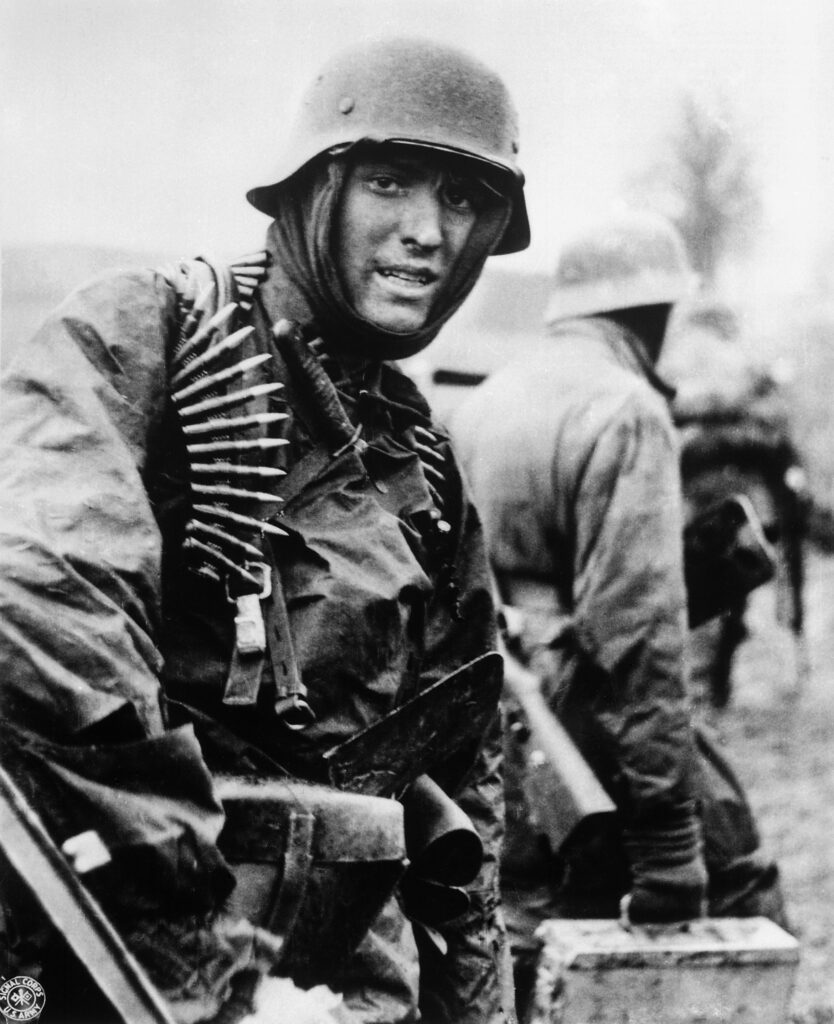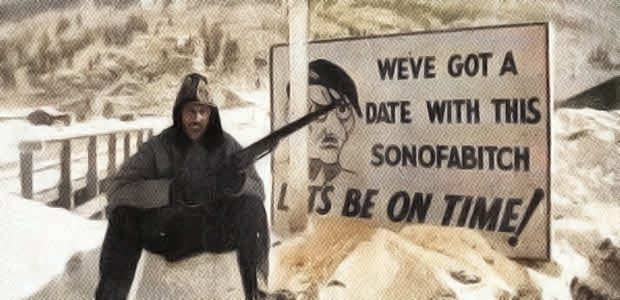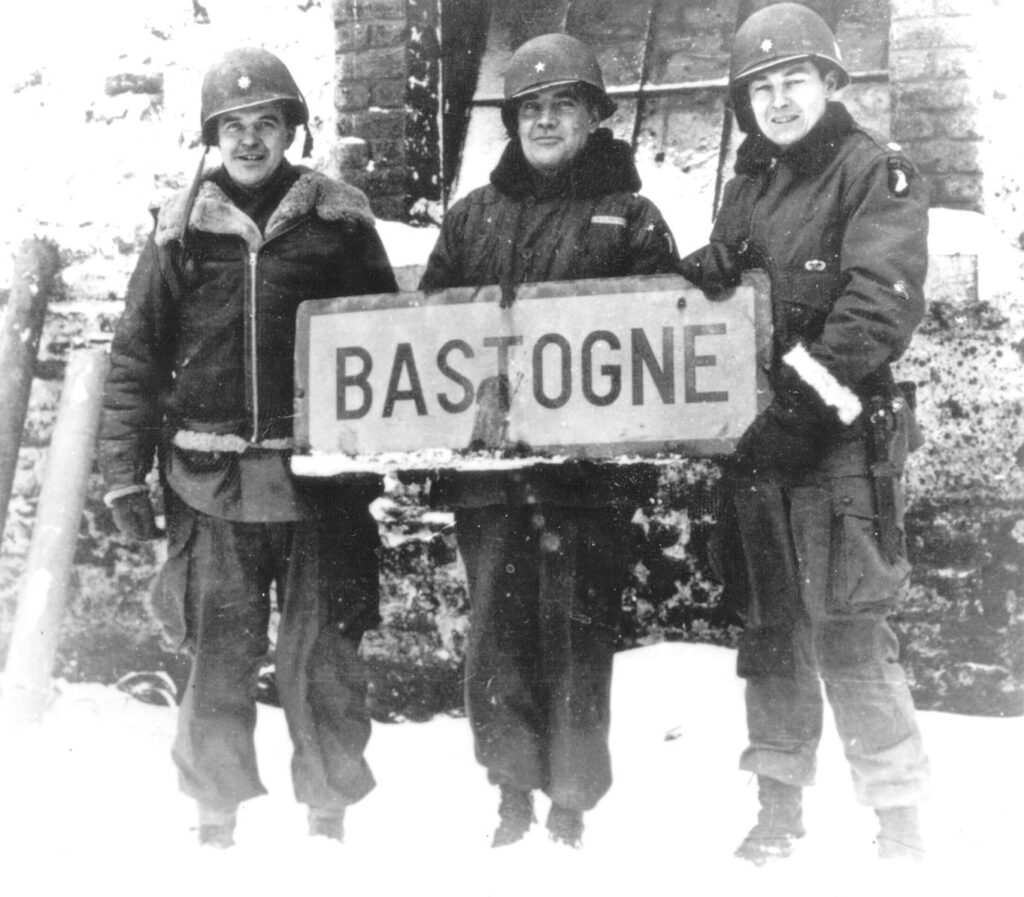In December 1944, the German Wehrmacht launched what would be its last offensive of World War II, a last-ditch, all-out effort to throw the Western Allies back from Germany’s borders. It would take the Allies almost six weeks to blunt the effort and force the German Army back, but for a time, it looked like the Nazi offensive might actually succeed in splintering the Allied invasion of Europe.

Germany threw everything it could into the effort, including an estimated 410,000 men, 1,500 armored vehicles, a thousand combat aircraft, and thousands of artillery guns. The response to such an assault would turn the Battle of the Bulge into the largest and one of the deadliest battles in U.S. military history.
The Ardennes Offensive: The Battle Unleashed
Only in January 1945 did it become apparent the offensive had failed and that Germans would spend the rest of World War II in retreat.
On the morning of Dec. 16, 1944, the German Army achieved total surprise against an Allied force that was fatigued and stalled in a bitter winter cold. Some 30 German divisions attacked the American forces through 85 miles of the dense Ardennes Forest, pushing the American lines back through Belgium and France and creating a large bulge in the battle lines on their maps.
The surprise, speed, and success of the offensive brought back memories of 1940 when the Germans easily routed the Allied forces and pushed the British Expeditionary Force into the sea at Dunkirk. For the Germans, it was their last chance to repel the Western invasion so the Nazis could focus on the fight against the Red Army in the east. Would the Americans crumble as their European Allies had at the beginning of World War II? How would the United States forces react? All of Europe held its breath to see if history was about to repeat itself.
Allied Victory in the Battle of Bulge
The timing was perfect for the Nazi onslaught. The weather interrupted Allied air support. The movement toward Germany was stalled by supply problems. German Führer Adolf Hitler believed the German Army could split the Allies in two, cut off the port of Antwerp from supplying both forces, and allow the Nazis to systematically destroy all four of the Allied armies in turn. For a while, it looked like they could be successful.

German advances needed to be swift, but the Americans weren’t so quick to give up (or even fall back) as the Allies had been in 1940. At places like Elsenborn Ridge in the north and Bastogne in the south, American soldiers considerably delayed the Nazi advance, forcing the Germans to concentrate their forces or to change their plans entirely. In the center, the Germans gained considerable ground, but by Dec. 23, it was too late; the weather was clearing.

Allied air power began hitting German armor in the middle of the roads, creating bottlenecks along the line of advance. Even more devastating for this last-gasp effort, Allied fighters and bombers began to wreak havoc on German supply lines, creating shortages the Wehrmacht could not overcome. The Axis forces stalled short of the Meuse River, and Nazi commanders began to recommend they fall back to German borders, a recommendation Hitler quickly discarded. Gen. George S. Patton was ordered to head toward then-surrounded Bastogne with his Third Army – a force of 230,000 men.
With Bastogne relieved, the Allies launched a two-pronged assault to not only blunt the Bulge but maybe even create a pocket of surrounded German troops. On Jan. 1, 1945, Patton’s Third Army attacked north from Bastogne. Two days later, British Field Marshal Bernard Montgomery would lead his Army south two days later, with the goal of joining at Houffalize, Belgium and trapping the enemy in their own advance.

But the Germans weren’t so easily beaten back. The forces in the Bulge managed to prevent being cut off by the Allied pincer and forced the Americans and British to pay dearly for the recaptured ground. Progress was slow, and the Battle of the Bulge didn’t fully end until Jan. 25, 1945. An estimated 19,000 Allied troops were killed, with another 47,500 wounded and 23,000 missing. The Germans suffered more than 100,000 killed, wounded, or missing.
Though costly, the Battle of the Bulge likely hastened the war’s end in Europe. Germany would spend the rest of the war in retreat, unable to mount effective resistance to the Soviet Union’s advance on the Eastern Front. After it was won, the British Prime Minister said of the battle:
“This is undoubtedly the greatest American battle of the war and will, I believe, be regarded as an ever-famous American victory.”
Read About Other Battlefield Chronicles
If you enjoyed learning about the bLearn more about the pivotal moments of World War II’s Battle of the Bulge on the Together We Served Blog.attle of the Bulge, we invite you to read about other battlefield chronicles on our blog. You will also find military book reviews, veterans’ service reflections, famous military units and more on the TogetherWeServed.com blog. If you are a veteran, find your military buddies, view historic boot camp photos, build a printable military service plaque, and more on TogetherWeServed.com today.

0 Comments